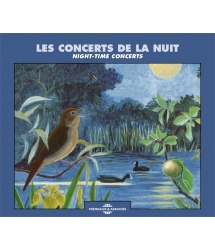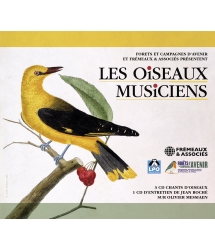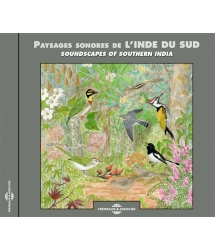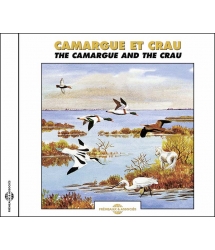- Our Catalog
- Philosophy
- Philosophers of the 20th century and today
- History of Philosophy (PUF)
- Counter-History and Brief Encyclopedia by Michel Onfray
- The philosophical work explained by Luc Ferry
- Ancient thought
- Thinkers of yesterday as seen by the philosophers of today
- Historical philosophical texts interpreted by great actors
- History
- Books (in French)
- Social science
- Historical words
- Audiobooks & Literature
- Our Catalog
- Jazz
- Blues
- Rock - Country - Cajun
- French song
- World music
- Africa
- France
- Québec / Canada
- Hawaï
- West Indies
- Caribbean
- Cuba & Afro-cubain
- Mexico
- South America
- Tango
- Brazil
- Tzigane / Gypsy
- Fado / Portugal
- Flamenco / Spain
- Yiddish / Israel
- China
- Tibet / Nepal
- Asia
- Indian Ocean / Madagascar
- Japan
- Indonesia
- Oceania
- India
- Bangladesh
- USSR / Communist songs
- World music / Miscellaneous
- Classical music
- Composers - Movie Soundtracks
- Sounds of nature
- Our Catalog
- Youth
- Philosophy
- News
- How to order ?
- Receive the catalog
- Manifesto
- Dictionnary











- Our Catalog
- Philosophy
- Philosophers of the 20th century and today
- History of Philosophy (PUF)
- Counter-History and Brief Encyclopedia by Michel Onfray
- The philosophical work explained by Luc Ferry
- Ancient thought
- Thinkers of yesterday as seen by the philosophers of today
- Historical philosophical texts interpreted by great actors
- History
- Books (in French)
- Social science
- Historical words
- Audiobooks & Literature
- Our Catalog
- Jazz
- Blues
- Rock - Country - Cajun
- French song
- World music
- Africa
- France
- Québec / Canada
- Hawaï
- West Indies
- Caribbean
- Cuba & Afro-cubain
- Mexico
- South America
- Tango
- Brazil
- Tzigane / Gypsy
- Fado / Portugal
- Flamenco / Spain
- Yiddish / Israel
- China
- Tibet / Nepal
- Asia
- Indian Ocean / Madagascar
- Japan
- Indonesia
- Oceania
- India
- Bangladesh
- USSR / Communist songs
- World music / Miscellaneous
- Classical music
- Composers - Movie Soundtracks
- Sounds of nature
- Our Catalog
- Youth
- Philosophy
- News
- How to order ?
- Receive the catalog
- Manifesto
- Dictionnary
PRIMATE WORLD - AFRICA, ASIA, AMERICA & MADAGASCAR
FREMEAUX & ASSOCIES
Ref.: FA630
EAN : 3448960263023
Author : 23|130
Artistic Direction : JEAN ROCHE
Label : Frémeaux & Associés
Total duration of the pack : 1 hours 3 minutes
Nbre. CD : 1

PRIMATE WORLD - AFRICA, ASIA, AMERICA & MADAGASCAR
PRIMATE WORLD - AFRICA, ASIA, AMERICA & MADAGASCAR
“This is the first time ever CD of the voices of Apes, Monkeys and Lemurs. These mammals, at the pinnacle of evolution, are closely related to man. The listener of this CD will discover the songs of pairs of Gibbons and of families of Siamangs: certain zoologists see in them a primitive form of “music” in the human sense of the term. This volume includes examples of the calls of monkeys and apes from Asia, Africa, Madagascar, and south and central America, as well as that of Lemurs, put together here for their aesthetic, even “musical” quality.” Jean C. Roché & Patrick Frémeaux
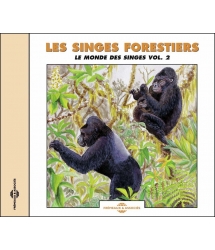
PRIMATES WORLD VOL 2
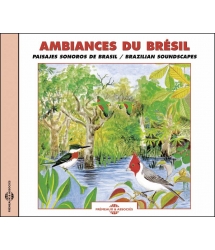
BRAZILIAN SOUNDSCAPE - PAISAJES DE BRASIL
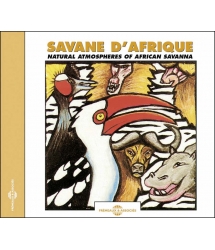




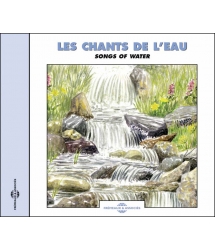
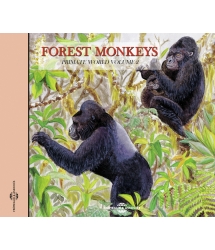
-
PisteTitleMain artistAutorDurationRegistered in
-
1UNE FAMILLE DE SIAMANGSSons de la nature00:12:361994
-
2UN COUPLE DE GIBBONSSons de la nature00:03:351994
-
3UN COUPLE DE GIBBONS 2Sons de la nature00:04:041994
-
4UN COUPLE DE GIBBONS 3Sons de la nature00:03:181994
-
5ORANG OUTAN MALESons de la nature00:02:101994
-
6UN ORANG OUTAN FEMELLESons de la nature00:02:381994
-
7UN HAREM DE NASIQUESSons de la nature00:02:051994
-
8UNE BANDE DE CHIMPANZÉSSons de la nature00:02:091994
-
9UNE FAMILLE DE GORILLES DE MONTAGNESons de la nature00:02:151994
-
10UN BABOUIN CHACMASons de la nature00:01:011994
-
11UN TROUPE DE BABOUIN CYNOCÉPHALESSons de la nature00:03:371994
-
12UNE TROUPE DE SINGES VERTSSons de la nature00:02:151994
-
13UNE BANDE DE COLOBES SATANSons de la nature00:06:141994
-
14DEUX HURLEURS À MANTEAUSons de la nature00:03:591994
-
15UN GROUPE DE HURLEURS ROUXSons de la nature00:01:511994
-
16UN GROUPE DE HURLEURS NOIRSSons de la nature00:02:001994
-
17UN GROUPE DE HURLEURS NOIRS 2Sons de la nature00:01:191994
-
18UN GROUPE DE LEMURS CATTASons de la nature00:01:081994
-
19UNE FAMILLE D'INDRISSons de la nature00:01:501994
-
20UN INDRISons de la nature00:00:441994
-
21DES FAMILLES D'INDRISSons de la nature00:02:461994
LE MONDE DES SINGES
LE MONDE DES SINGES
Afrique, Asie, Amérique / PRIMATE WORLD
Introduction
- Pour la première fois un CD est consacré aux voix des Singes et des Lémuriens ! Ces mammifères sont à la pointe de l’évolution, et donc très proches de l’homme. Ils ont des émissions vocales variées et souvent très belles. A l’écoute de ce CD, vous découvrirez les chants des couples de Gibbons et des familles de Siamangs : certains zoologistes y voient une forme première de “musique” au sens humain du terme. D’autres émissions sont étranges comme les “ronflements” du Gorille, les “hoquets” du Colobe, les “baisers-grinçants” de l’Orang-outan, ou les chants des Hurleurs d’Amazonie, sans parler des appels nocturnes de Lémurs de Madagascar.
- Ce premier volume du Monde des Singes vous donne des exemples de vocalisations de singes d’Asie, d’Afrique et d’Amérique du Sud et Centrale ainsi que de Lémurs, rassemblés ici pour leur aspect esthétique, disons même “musical”. Le second volume à paraître sera consacré à la communication sonore des singes et donnera de nombreux exemples de comportements sonores précis puisés dans la sonothèque du Laboratoire de Primatologie de la Station Biologique de Paimpont en Bretagne (CNRS).
- Le naturaliste européen n’a guère l’occasion d’entendre les singes, sauf s’il va sur le Rocher de Gibraltar. Mais en Afrique, en Asie, en Amérique du Sud ou Centrale, les voix des singes sont omniprésentes en forêt ou en savane et participent aux grands concerts naturels depuis le lever du soleil jusqu’à la nuit. L’écoute d’un chœur de Gibbons dans la jungle de Sumatra ou celle d’une bande de Hurleurs en forêt amazonienne est un événement inoubliable !
Première partie : singes d’Asie.
1. Une famille de Siamangs (Hylobates syndactylus, Hylobatidés).
- Enregistrée à Bohorok, Sumatra, Indonésie, le 16 septembre 1976.
- Fond sonore : insectes, cris forts bisyllabiques du Faisan Argus et chants de Gibbons.
- Les Siamangs sont des singes arboricoles avec des bras très longs et dépourvus de queue, qui habitent dans les forêts de basse et moyenne altitude en Asie. Ils vivent en groupes familiaux de 5 individus ou plus et chantent ensemble, en général le matin, pour marquer et défendre leur territoire. Ce chant collectif porte jusqu’à 2 kilomètres et peut durer plus de 15 minutes ! Chaque adulte répète sa note en la synchronisant avec celle des autres. Le rythme varie : lent au début, il s’accélère soudain, puis s’arrête net, repart lentement, et ainsi de suite. Les adultes produisent les “boououoummmm” graves en gonflant leurs sacs vocaux. Tout en chantant, les Siamangs s’agitent et sautent d’une branche à l’autre, faisant ainsi le tour de leur territoire. D’autres familles leur répondent à distance.
2. Un couple de Gibbons (Hylobates lar, Hylobatidés).
- Enregistré à Taman Negara, en Malaisie, le 6 mars 1977.
- Fond sonore : au début, Barbus au premier plan, ensuite loin avec des insectes.
- Les Gibbons sont de la même famille que les Siamangs et leur ressemblent, ils vivent également dans les forêts d’Asie, et chantent par couples le matin en duo pour marquer le territoire. Le mâle commence par des notes d’appel, la femelle se joint à lui un moment, puis elle assure seule la finale, avec des sons longs et traînants, dont le dernier descend dans les graves. Aussitôt le chant repart, et cela peut durer plus d’une demi-heure. Dans cet enregistrement, il y a un seul solo de la femelle, peu avant la fin.
3. Un second couple de Gibbons (même espèce).
- Enregistré au Parc de Yala, en Thaïlande, le 24 janvier 1976.
- Fond sonore : duets de Barbus, Coqs sauvages et insectes au loin.
- Ce chant comporte trois finales lentes de la femelle, les parties chantées en duo sont réduites, et les cycles de chants sont séparés par des silences.
4. Un troisième couple de Gibbons (même espèce).
- Enregistré à Taman Negara, en Malaisie, comme le premier.
- Fond sonore : insectes et oiseaux.
- Ici, le duo se réduit à quelques secondes. Par deux fois, le mâle s’arrête de chanter dès que la femelle commence sa finale lente. Ces trois exemples illustrent les différentes formes de chant d’une même espèce.
5. Un Orang-outan mâle (Pongo pygmaeus, Pongidés).
- Enregistré dans la Réserve de Kalimantan, à Bornéo, en août 1985.
- Fond sonore : insectes.
- Singe assez solitaire, l’Orang-outan vit seulement à Bornéo et à Sumatra. Il est très arboricole mais n’hésite pas à descendre au sol pour chercher sa nourriture. On a recensé chez ce singe 16 émissions vocales différentes, dont nous vous proposons 2 exemples. Ici, les “cris longs” d’un mâle adulte qui ont une signification territoriale.
6. Un Orang-outan femelle.
- Mêmes lieu et date d’enregistrement que le précédent.
- Fond sonore : insectes et oiseaux au loin.
- Second exemple : ici c’est la femelle qui émet des “baisers-grinçants”, en réponse à la présence inquiétante de l’observateur humain. Pour émettre ce cri, la femelle retrousse ses lèvres en trompette et aspire l’air par à-coups, tout en agitant les branches pour faire plus d’impression.
7. Un harem de Nasiques (Nasalis larvatus, Colobinés).
- Enregistré à la Réserve de Kalimantan, à Bornéo, en septembre 1985.
- Fond sonore : amphibiens, insectes.
- Dans les forêts humides de Bornéo, le Nasique vit en harems tandis que les mâles célibataires se regroupent en bandes pouvant atteindre 60 individus. Son nez immense sert de caisse de résonnance à ses cris en leur donnant une forte sonorité nasale. On entend d’abord ici des cris graves collectifs et des bruits de déplacement, puis ceux irrités du mâle dominant, et, vers la fin, d’autres cris des membres du harem.
Seconde partie : singes d’Afrique.
8. Une bande de Chimpanzés (Pan troglodytes, Pongidés).
- Enregistrée en Gambie, Afrique, en janvier 1986.
- Fond sonore : bruit d’un cours d’eau.
- Le Chimpanzé est un singe très extraverti qui émet des vocalisations bruyantes et variées, recensées au nombre de 12. Dans le présent enregistrement réalisé au sein d’une bande, on en perçoit 5 ou 6 différentes.
9. Une famille de Gorilles de montagne (Gorilla gorilla beringei, Pongidés).
- Enregistrée au Rwanda, dans les Virunga, en juillet 1986.
- Fond sonore : faible.
- Diana FOSSEY a étudié l’espèce pendant de nombreuses années, et a pu répertorier 15 émissions sonores différentes. Cet enregistrement commence par des bruits de mastication et des ronflements de contentement, des bruits de branches, puis deux aboiements brefs émis par un individu dérangé. Ensuite on peut entendre une vocalisation associée à une série rapide de “frappements de poitrine” caractéristique de l’espèce. A la fin, plusieurs individus se disputent et se déplacent dans la végétation.
10. Un Babouin chacma (Papio ursinues Cercopithécidés).
- Enregistré au Krüger Park, en Afrique du Sud, le 17 septembre 1969.
- Fond sonore : faible, Tourterelles au loin.
- Les 5 espèces de Babouins habitent les milieux ouverts africains, principalement les savanes. Ils vivent habituellement en grandes troupes, et lorsqu’ils se déplacent, les mâles dominants marchent devant; les autres mâles forment l’arrière-garde. On rencontre parfois des individus isolés, comme celui enregistré ici, qui venait “faire les poubelles” du Parc tous les matins : il semblait m’insulter pour l’avoir dérangé.
11. Une troupe de Babouins cynocéphales (Papio cynocephalus, Cercopithécidés).
- Enregistrée au Sénégal, dans le Parc du Niokolo-Koba, le 26 mai 1971.
- Fond sonore : insectes et grognements d’Hippopotames.
- Je suis tombé sur une bande nombreuse qui était de l’autre côté de la rivière, et qui se préparait à une bagarre générale. Au début on entend des “aboiements” de mécontentement, puis la bagarre commence avec des poursuites effrénées, des branches violemment secouées, et des cris aigus et stridents. Enregistrement peu agréable, qui ressemble beaucoup à une bagarre de chiens !
12. Une troupe de Singes verts (Cercopithecus aethiops, Cercopithécidés).
- Enregistrée au Swaziland, Afrique du Sud, le 11 septembre 1969.
- Fond sonore : oiseaux.
- Ce singe vert n’est pas forestier et préfère les savanes arbustives, depuis la Somalie jusqu’à l’Afrique du Sud. Il pousse trois alarmes différentes selon la nature du danger : le “cri-aigle”, le “cri-léopard” ou le “cri-serpent”. Il aurait même des “cris-serpents” différents selon que le serpent est venimeux ou non ! Dans cet enregistrement, une bande surprise par mon arrivée discrète pousse ses alarmes de type “léopard” tandis que chaque singe essaie de se réfugier le plus haut possible dans les arbres, au bout des branches, là où un Léopard (ou moi-même) ne saurait le suivre.
13. Une bande de Colobes satan (Colobus satanas, Colobinés).
- Enregistrée dans la Réserve de La Lopé, au Gabon, le 24 mars 1987.
- Fond sonore : insectes, tambourinages d’un Pic, Grand Calao et petits oiseaux.
- Les Colobinés n’ont que 4 doigts à chaque membre, ce qui ne les empêche pas de sauter d’un arbre à l’autre comme de vrais acrobates. Ce Colobe doit son nom de “satan” à son pelage de jais et à ses oreilles pointues. Un dicton local prétend qu’il crie sans arrêt : “Pourquoi moi quatre doigts ? Pourquoi moi quatre doigts ?”. Ici on entend d’abord les cris d’alarme aigus (on dirait ceux d’un oiseau) et les sauts dans les branches d’un autre singe (la Mone de Gray). Puis viennent les premiers cris “toussés” des Colobes, dont le chœur grave va se développer à plusieurs reprises.
Troisième partie : singes d’Amérique.
14. Deux Hurleurs à manteau (Alouatta palliatta, Alouattinés).
- Enregistrés au Parc de la Selva, Costa-Rica, le 5 août 1991.
- Fond sonore : nombreux insectes et oiseaux, dont un Troglodyte.
- Il y a 6 espèces de Hurleurs en Amérique du Sud et Centrale qui sont toutes forestières. La présence de sacs vocaux chez les 2 sexes permet aux groupes d’émettre en chœur des chants qui leur servent à maintenir leurs distances. Ici 2 mâles se répondent, avec 3 types d’émissions différentes.
15. Un groupe de Hurleurs roux (Alouatta seniculus, Alouattinés).
- Enregistré en Amazonie, Sud Vénézuela, le 7 mai 1972.
- Fond sonore : insectes et oiseaux amazoniens.
- Chœur de quelques mâles en fin de matinée, dont la portée dépasse 3 kilomètres pour notre oreille. Le rythme est un balancement lent et grave, avec parfois une descente plus prononcée. Aussitôt le chant repart, il peut durer plus d’une demi-heure.
16. Un groupe de Hurleurs noirs (Alouatta caraya, Alouattinés).
- Enregistré au Pentanal, Brésil, le 23 avril 1990.
- Fond sonore : insectes et oiseaux.
- Chants en chœur de plusieurs adultes enregistrés de très près, qui commencent et se terminent par des grognements doux.
17. Un couple de Hurleurs noirs (même espèce).
- Enregistré en Argentine, dans la réserve de Pilco Mayo, le 14 octobre 1984.
- Fond sonore : insectes et quelques oiseaux dont des Hérons.
- Cet enregistrement a été réalisé en fin de journée, le mâle et la femelle chantaient ensemble sur un même arbre. Le rythme est lent et régulier, et la puissance très inférieure à celle du hurleur roux.
Quatrième partie : lémurs de Madagascar.
18. Un groupe de Lémurs catta (Lemur catta, Lémuridés).
- Enregistré à Berenty, Sud de Madagascar, le 4 novembre 1988.
- Fond sonore : faible.
- Ce lémur habite les forêts humides du Sud-Est de Madagascar uniquement. Il se reconnaît à sa queue annelée noire et blanche très élégante. Il forme des groupes pouvant compter jusqu’à 25 individus, qui chantent à la nuit tombée, comme celui enregistré ici.
19. Une famille d’Indris (Indri indri, Indriidés).
- Enregistrée près de Périnet, Est de Madagascar, le 20 novembre 1988.
- Fond sonore : oiseaux lointains, autres Indris au loin.
- C’est le plus gros des Lémurs et il a la réputation d’être lent et placide. Il vit dans les forêts du Nord-Est de Madagascar en petits groupes familiaux. Son chant territorial, émis la nuit venue, a une portée supérieure à 2 kilomètres pour l’oreille humaine. Ici un groupe de 5 Indris.
20. Un Indri (même espèce).
- Enregistré près de Périnet, Est de Madagascar, le 12 novembre 1977.
- Fond sonore : faible.
- Ici trois séries d’aboiements en “klaxon” qui ont une signification d’alarme.
21. Des familles d’Indris (même espèce).
- Enregistrées près de Périnet, Est de Madagascar, le 12 novembre 1977.
- Fond sonore : réponses d’autres familles lointaines.
- Autres chœurs nocturnes. On peut entendre ici que les chants débutent par des cris spéciaux, et que d’autres familles répondent au loin. Ces chants d’Indris constituent l’un des plus beaux concerts nocturnes que l’on puisse entendre sur “La grande Ile”.
Mens, le 25 octobre 1994 - Jean C. Roché
© 1994 SITTELLE - 2007 FRÉMEAUX & ASSOCIÉS, Avec la participation de : P. Barbeau, C. Bouchain, B. Gunn, E. Matheu, A. de Maximy, M. Rodolfi, J.C. Roché, B. Tarière, D. Tombs, N. Tucker, M. Todisco.
Remerciements : Je tiens à remercier tous ceux qui ont contribué à la réalisation de ce CD, et en particulier la BBC, (Natural History Unit), pour les enregistrements de N. Tucker et D. Tombs, et la CBC/SRC (Canadian Broadcasting Corporation), pour les enregistrements de Bill GUNN. (Voir en début de ce livret l’accréditif donnant la liste des auteurs).
English notes
Introduction
- This is the first ever CD of the voices of Apes, Monkeys and Lemurs. These mammals, at the pinnacle of evolution, are closely related to man. They give out varied and often beautiful calls. The listener of this CD will discover the songs of pairs of Gibbons and of families of Siamangs : certain zoologists see in them a primitive form of “music” in the human sense of the term. Other vocal emissions are strange ; the “snorings” of the Gorilla, the “hiccups” of the Colobus, the “scratchy kisses” of the Orang-utan, or the songs of Amazonian Howler monkeys, not to mention the nocturnal calls of Lemurs in Madagascar.
- This first volume of The Primates World includes examples of the calls of monkeys and apes from Asia, Africa and south and central America, as well as that of Lemurs, put together here for their aesthetic, even “musical” quality.The second volume to be published will be devoted to Vocal Communication in the Primates and will include many examples of precise vocal behaviour drawn from the sound library of the Laboratoire de Primatologie (Primate Laboratory) at the Station Biologique de Paimpont (CNRS) (Paimpont governmental Biological Research Station) in Brittany.
- The naturalist in Europe hardly has the chance to hear primates, except on the Rock of Gibraltar, but in Africa, Asia and south and central America, the voices of primates are everpresent in forest and savanna and are an integral part of natural concerts from dawn ’till dusk. Hearing a chorus of Gibbons in the Sumatra jungle or that of a group of Howlers in an Amazonian forest is an unforgetable experience.
First Part : Primates of Asia.
1. Family of Siamangs (Hylobates syndactylus, Hylobatidae).
- Recorded at Bohorok; Sumatra, Indonesia, 16 september 1976.
- Background sounds : calls of insects and the loud, disyllabic cry of the Great Argus Pheasant.
- Siamangs are arboreal monkeys with very long arms and without a tail, that inhabit low and mid altitude forests of Asia. They live in family groups of 5 or more individuals and sing as a group, generally in the morning, to mark and defend their territory. The group song can carry up to two kilometres and last more than 15 minutes. Each adult repeats its notes in synchrony with those of the others. The rythm is variable : slow at first, it accelerates suddenly and then stops net, restarts slowly, and so on. Adults produce a deep “bouououoummmm” by inflating their vocal sacs. Whilst calling Siamangs are restless, jumping from one branch to another and in this way making a tour of their territory. Other families can be heard replying in the distance.
2. Pair of Lar Gibbons (Hylobates lar, Hylobatidae).
- Recorded at Taman Negara, in Malaya, 6 March 1977.
- Background sounds : firstly, barbets nearby, then farther away with insects.
- Gibbons are of the same family and resemble Siamangs, they equally inhabit the forests of Asia, pairs sing in duet during the morning to mark their territory. The male starts with summoning notes, the female joins in for a moment then finishes alone, with long, lingering notes, of which the last become deep. Soon the song starts again, and this can go on for more than half an hour. In this recording there is single solo by the female, just before the end.
3. A second pair of Lar Gibbons (same species).
- Recorded in the Yala Park, Thailand, 24 January 1976.
- Background sounds : a barbet duet, cock Junglefowl and insects in the distance.
- The song contains three slow finales by the female, those parts in duet are reduced and cycles of song are separated by periods of silence.
4. A third pair of Lar Gibbons (same species).
- Recorded at Taman Negara, Malaya, as the first.
- Background sounds : insects and birds.
- Here, on two occasions, the male calls almost in solo, and stops nearly as soon as the female starts her slow finale. The three examples given here illustrate the different forms of calls possible from the same species.
5. Male Orang-utan (Pongo pygmaeus, Pongidae).
- Recorded in the Kalimantan reserve, Borneo, during August 1985.
- Background sounds : amphibians, insects.
- A relatively solitary ape, the Orang-utan occurs only in Borneo and Sumatra. Mainly tree-dwelling, it will often come to the ground looking for food. 16 different vocal emissions have been identified amond this species. Here are presented the long-calls of an adult male, which have territorial significance.
6. Female Orang-utan (same species).
- Same recording details as the previous track.
- Background sounds : insects and birds in the distance.
- Second example : here a female giving “scratchy kisses”, in consequence of the worrying presence of a human observer. To make the sound, she turns back her lips in a trumpet shape and draws in air in bursts, whilst shaking branches to make more of an impression.
7. Harem of Proboscis Monkeys (Nasalis larvatus, Colobinae).
- Recorded in the Kalimantan reserve, Borneo, during September 1985.
- Background sounds : insects.
- Found in the Borneo mangroves, Proboscis Monkeys either live in harems of groups of bachelor males up to 60 strong. Their enormous noses serve as resonance boxes to their calls giving them a strongly nasal quality; We firstly hear low collective calls and the sound of the animals moving, then the irritated cries of the dominant male, and, finally, calls from other member of the harem.
Second Part : Primates of Africa.
8. Group of Chimpanzees (Pan troglodytes, Pongidae).
- Recorded in the Gambia, during January 1986.
- Background sounds : sounds of a watercourse.
- The chimpanzee is a very extraverted ape and has many varied and noisy vocalizations, 12 have been identified. The present recording was made amongst a group, 5 or 6 calls my be discerned.
9. Family of Mountain Gorillas (Gorilla gorilla beringei, Pongidae).
- Recorded in Rwanda, in the Virunga range, during July 1986.
- Background sound : feable.
- Diana FOSSEY studied this species for many years and identified 15 different vocal emissions. This recording starts with contented mastication and rumbling, the noise of branches, then two brief barks of a disturbed individual. Then we hear vocalizations associated with a rapid series of chest beating, characteristic of the species. Finally, several individuals are in dispute and move about in the vegetation.
10. Chacma Baboon (Papio ursinus, Cercopithecidae).
- Recorded in the Kruger national park, South Africa, 17 September 1969.
- Background sounds : feable, birds in the distance.
- The five species of Baboon inhabit open terrain in Africa, principally savanna. They normally live in large groups and whilst on the move the dominant males lead, other males form the rear-guard. Sometimes lone individuals are encountered, as the one recorded here, which inspected the parks’ rubbish bins every morning; he seems to be insulting the recordist for his having been disturbed.
11. Group of Yellow Baboons (Papio cynocephalus, Cercopithecidae).
- Recorded in Senegal, in the Niokolo-Koba national Park, 26 May 1971.
- Backgroung sounds : insects and grunting Hippopotami.
- The recordist came across a large group on the opposite side of a river, preparing themselves for a general brawl. Firstly can be heard “barks” of displeasure, then the brawl starts with frantic chases, the violent shaking of branches and strident, high-pitched cries. An unpleasant recording, very similar to dogs fighting.
12. Group of Vervet Monkeys (Cercopithecus aethiops, Cercopithecidae).
- Recorded in Swaziland, South Africa, 11 September 1969.
- Background sounds : birds.
- Not a forest Monkey, it prefers bushy savana, occuring from Somalia right down to South Africa. It has three different alarm calls depending on the type of danger : the “eagle-alarm”, the “leopard-alarm” and the “snake-alarm”. There are even different calls according to whether the snake is poisonous or not ! In this recording a group surprised by the recordists’ discreet arrival gives the “leopard” type alarm cries as each monkey tries to shelter as high as possible in the trees, at the end of the branches, where a leopard, or the recordist, can’t follow them.
13. Group of Black Colobus Monkeys (Colobus satanus, Colobinae).
- Recorded in the Lopé reserve, Gabon, 2 March 1987.
- Background sounds : insects, Woodpecker drumming, Ground Hornbill and small birds.
- The Colobinae have only 4 digits on each limb, which doesn’t at all stop them from leaping from one tree to another like real acrobats. This Colobus owes its latin name to its jet-black coat and pointed ears. A local saying interprets its call as an incessant “Pourquoi-moi quatre doigts ? Pourquoi-moi quatre doigts ?” (“Why me with four fingers ? Why me with four fingers ?”). Here, there is firstly a shrill alarm call (sounding like the cry of a bird) and another species of monkey (Crowned Guenon) jumping into the branches. Then come the first “coughed” calls of the Colobus Monkeys, their low-pitched chorus will ring out many times.
Third Part : Monkeys of America.
14. Two Mantled Howler Monkeys (Alouatta palliatta, Alouattinae).
- Recorded in the Selva park, Costa-Rica, 5 August 1991.
- Background sounds : many insects and birds, including a Wren.
- There are six species of Howlers in South and Central America, all are forest dwellers. The presence of vocal sacs in both sexes allows groups to sing as a unit, allowing each group to separate itself from the others. Here two males reply to each other, with three different types of call.
15. Group of Red Howlers (Alouatta seniculus, Alouattinae).
- Recorded in Amazonia, south Venezula, 7 May 1972.
- Background sounds : Amazonian insects and birds.
- A chorus of a few males, late morning; to our ears the sound carries more than 3 km. A slow low-pitched rocking rythm, sometimes with a more pronounced descent. No sooner finished than it starts again, the whole may last more than half an hour.
16. Group of Black Howlers (Alouatta caraya, Alouattinae).
- Recorded in the Pentanal, Brazil, 23 April 1990.
- Background sounds : insects and birds.
- Chorus of several adults close to the recordist; the start and end of the song, of soft gruntings, are readily distinguishable.
17. Pair of Black Howlers (same species).
- Recorded in the Pilco Mayo reserve, Argentina, 14 October 1984.
- Background sounds : insects and a few birds, including herons.
- Recorded in the evening, male and female call in harmony on the same tree. The rythm is slow and regular, far weaker than the calls of the Red Howler.
Fourth Part : Lemurs of Madagascar.
18. Group of Ring-tailed Lemurs (Lemur catta, Lemuridae).
- Recorded at Berenty, southern Madagascar, 4 November 1988.
- Background sounds : feable.
- This lemur inhabits the rain forests of south-east Madagascar exclusively; it is recognized by its elegant black and white ringed tail. They live in groups of up to 25 individuals, and call at night, when this recording was taken.
19. Family of Short-tailed Indris (Indri indri, Indriidae).
- Recorded near Périnet, eastern Madagascar, 20 November 1988.
- Background sounds : birds in the distance.
- This is the largest of the Lemurs with a reputation for being slow and calm. It lives in small family groups in the forests of north-eastern Madagascar. Its territorial calls, given once night falls, can be heard at a distance of more than 2 km by the human ear. Here a group of 5 Indris.
20. A Short-tailed Indri (same species).
- Recorded near Périnet, eastern Madagascar, 12 November 1977.
- Background sounds : feable.
- Here three series of “hooting” barks that are an alarm signal.
21. Families of Indris (same species).
- Recorded near Périnet, eastern Madagascar, 12 November 1977.
- Background sounds : replies from other families in the distance.
- Other nocturnal choruses. Here it’s possible to hear that the calls start with a special cry, and that other families reply in the distance. These Indri “songs” constitute one of the most beautiful nocturnal concerts that can be heard on “La Grande Ile” (translated literally - the Big Island).
Mens, 25 october 1994 - Jean C. Roché, Translated in english by Tony Williams
© 1994 SITTELLE - 2007 FRÉMEAUX & ASSOCIÉS, With the participation of : P. Barbeau, C. Bouchain, B. Gunn, E. Matheu, A. de Maximy, M. Rodolfi, J.C. Roché, B. Tarière, D. Tombs, N. Tucker, M. Todisco.
Droits audio : Frémeaux & Associés - La Librairie Sonore (Producteur initial : Sittelle ou Ceba) / Ecouter les chants d'oiseaux sur CD : Sons et ambiances naturelles des écosystèmes - Stéreo and digital recording of the natural landscape sound. Natural sound sceneries of écosystems, Voices of the Wild Life. Les droits de cet enregistrement sont protégés par la loi. Pour toute exploitation d’illustration sonore sur CD, DVD, CD-Rom, Télévision, Cinéma, Sites internet, scénographies (théâtre, musées…), l’autorisation et un devis gratuit peuvent être obtenus auprès de Frémeaux & Associés – fax : +33 (0)1 43.65.24.22 info@fremeaux.com
